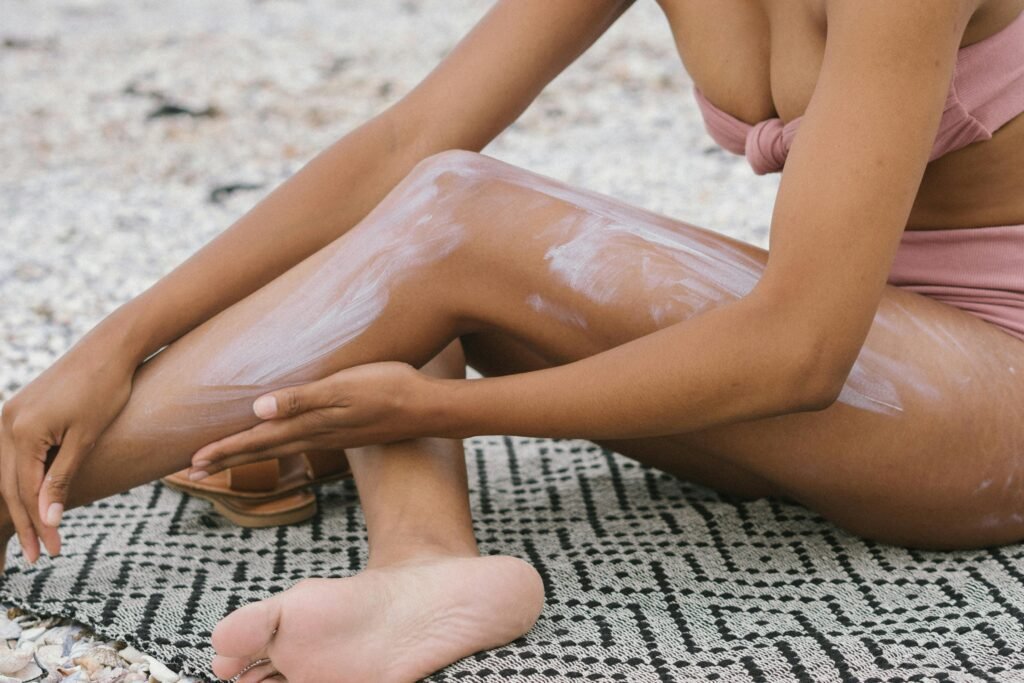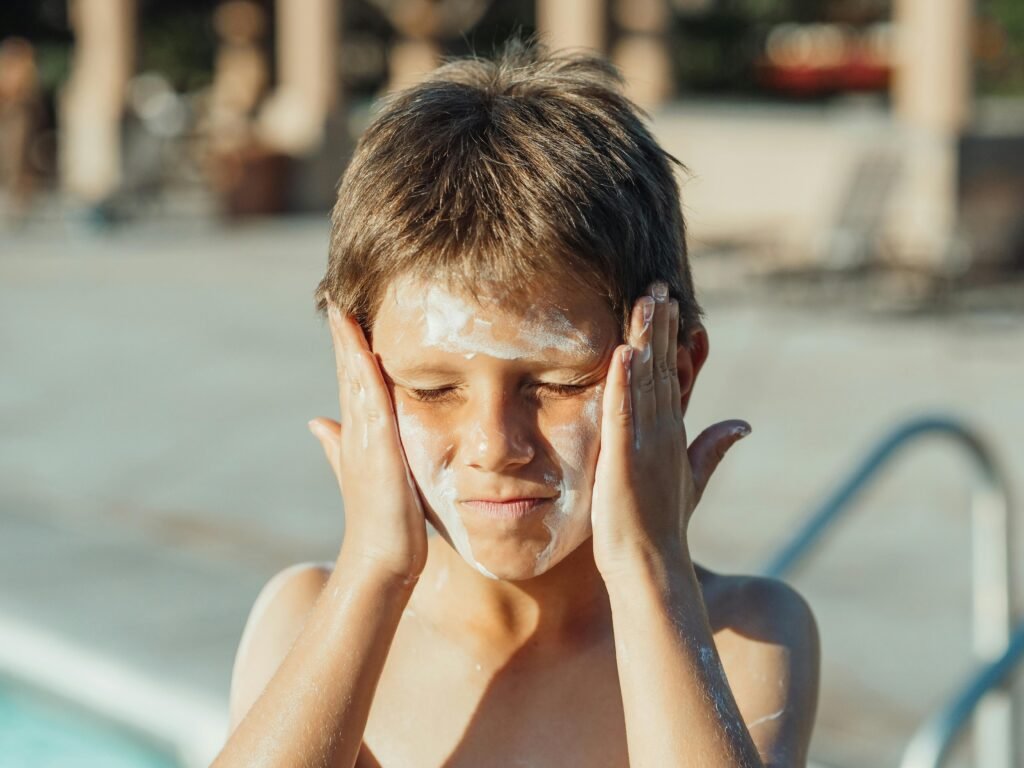Sunscreen is a must-have in your skincare routine because it protects your skin from harmful UV rays, premature aging, and even skin cancer. But there’s a persistent question that keeps popping up: Does sunscreen block vitamin D? Let’s explore this sun-soaked debate and see if lathering up really stops your body from absorbing the sunshine vitamin!
What Is Vitamin D and Why Do We Need It?

Vitamin D is often called the “sunshine vitamin” because our bodies produce it when exposed to sunlight. It plays a crucial role in:
- Bone health – helping calcium absorption
- Immune function – supporting your body’s ability to fight infections
- Mood regulation – linked to reducing symptoms of depression and anxiety
Clearly, vitamin D is important—but does sunscreen prevent us from getting enough of it?
How Does Sunscreen Work?
Sunscreen acts as a shield, absorbing or reflecting UV radiation to prevent skin damage. Most sunscreens are formulated to block UVB rays, which are also responsible for vitamin D production.
So, if sunscreen blocks UVB rays, does it mean no vitamin D at all? Well… not exactly!
Does Sunscreen Block Vitamin D Completely?

Not really! Even when wearing sunscreen, you can still produce vitamin D. Here’s why:
- People rarely apply enough sunscreen – Most of us don’t slather on the recommended amount (about a shot glass full for the whole body). That means some UVB rays still reach the skin.
- Sunscreen wears off – Between sweat, swimming, and just living life, sunscreen fades, leaving skin exposed to some sunlight.
- Some UVB still penetrates – No sunscreen can block 100% of UV rays. Most SPF 30 sunscreens block about 97% of UVB rays, but your body can still work with the remaining 3%.
- Short sun exposure is enough – Even 10 to 30 minutes of sun exposure a few times a week can produce adequate vitamin D for most people.
So, Should You Skip Sunscreen for Vitamin D?
Nope! While it’s true that sunscreen reduces UVB penetration, the risks of sun exposure far outweigh the risks of vitamin D deficiency. Sunburns, wrinkles, dark spots, and skin cancer are all serious concerns.
Instead of ditching sunscreen, consider these vitamin D-friendly strategies:
How to Get Enough Vitamin D Without Damaging Your Skin
- Spend short, intentional periods in the sun – About 10-15 minutes of unprotected sun exposure on your arms and legs, a few times a week, can be enough.
- Get vitamin D from food – Fatty fish (like salmon), egg yolks, and fortified foods (like milk and orange juice) are great sources.
- Take a vitamin D supplement – If you live in a region with long winters or have darker skin, a supplement can help keep your levels up.
- Check your vitamin D levels – If you’re concerned, a simple blood test can tell you if you need to boost your intake.
Sunscreen and Vitamin D Can Coexist!
The bottom line? Does sunscreen block vitamin D? Technically, yes, but not enough to make you deficient if you’re getting sun in moderation or supplementing wisely. There’s no need to risk sun damage just for a little extra vitamin D.
Wear your sunscreen, enjoy the sun safely, and let your skin and bones thrive together!
Have more questions about sun safety and skincare? Stick with Giving Skin for all the best tips!
Frequently Asked Questions: Does Sunscreen Block Vitamin D?
1. Does sunscreen really block all vitamin D production?
No, sunscreen doesn’t completely block your body from making vitamin D. It does reduce the amount you produce, but it doesn’t shut it down entirely. Even when you’re wearing sunscreen, small amounts of UVB rays still penetrate your skin, allowing vitamin D synthesis to happen—just at a lower rate.
Most people also don’t apply sunscreen perfectly or reapply it as often as they should, meaning their skin still gets some UVB exposure. So unless you’re living in a cave 24/7 or layering on SPF 1000 (which doesn’t exist), your body is still making vitamin D.
2. If I wear sunscreen every day, should I worry about vitamin D deficiency?
Not necessarily! Vitamin D deficiency is more about your overall lifestyle than just your sunscreen use. Most people get enough vitamin D from a mix of diet, supplements, and the sunlight they’re exposed to throughout daily activities.
The biggest risk factors for vitamin D deficiency aren’t sunscreen—it’s things like spending all your time indoors, having darker skin (which naturally filters UVB rays), living in a place with long winters, or having certain medical conditions. If you’re worried, you can always get a simple blood test to check your levels.
3. What’s the best way to balance sun protection and vitamin D?
It’s all about balance. You don’t need to bake in the sun for hours to get enough vitamin D, nor do you have to avoid sunlight completely. If you spend a little time outside in the morning or late afternoon without sunscreen (about 10-30 minutes, depending on your skin tone), your body can produce enough vitamin D without putting yourself at serious risk for sun damage.
That said, sunscreen should always be your go-to if you’re spending a long time in the sun. Skin cancer and premature aging are real concerns, and vitamin D can always be supplemented—wrinkles and sunspots, not so much.
4. Do different skin tones need different amounts of sun exposure for vitamin D?
Yep! Melanin—the pigment that gives skin its color—naturally filters UVB rays. That means people with darker skin tones need more sun exposure to produce the same amount of vitamin D as someone with lighter skin. While fair-skinned people might only need 10-15 minutes of sun a few times a week, people with deeper skin tones might need up to an hour.
This is why vitamin D deficiency is more common in Black and brown communities, especially in colder climates where sunlight is limited. If you have darker skin and don’t get much sun exposure, adding vitamin D-rich foods or a supplement is a smart move.
5. Why do some doctors still recommend getting sun exposure without sunscreen?
Some health professionals argue that brief sun exposure without sunscreen can be beneficial because vitamin D is essential for bone health, immune function, and mood regulation. They suggest short periods of sun exposure before applying sunscreen, especially for those at risk of deficiency.
But let’s be real—there’s a fine line between getting enough sun for vitamin D and putting yourself at risk for sunburn, premature aging, and skin cancer. Plus, you can get vitamin D from food and supplements, so it’s not like the sun is your only option. If a doctor suggests skipping sunscreen completely, you might want a second opinion.
6. Are there better ways to get vitamin D than sun exposure?
For sure! While the sun is a natural source of vitamin D, food and supplements can do the job just as well—without skin damage. Fatty fish like salmon, tuna, and mackerel are great sources. Fortified foods like milk, orange juice, and cereals also contain vitamin D. And if you’re really struggling to get enough, a daily vitamin D supplement is an easy fix.
If you’re relying on food alone, just know that most people don’t naturally get enough vitamin D from diet alone, which is why a combo of sunlight and supplementation works best for many people.
7. What’s the biggest myth about sunscreen and vitamin D?
The biggest myth is that sunscreen completely stops your body from making vitamin D, leading to widespread deficiencies. That’s just not true. Sunscreen reduces vitamin D production but doesn’t block it entirely. Plus, most people don’t apply enough sunscreen or reapply it perfectly, so their skin is still getting some UVB rays.
Another myth is that tanning is a good way to get vitamin D. Tanning is literally your skin trying to protect itself from DNA damage, so if you’re getting tan, you’re already past the “healthy sun exposure” stage. There’s no such thing as a safe tan!
Moral of the story? Wear sunscreen, get some sun in moderation, and if you’re really worried about vitamin D, just pop a supplement—it’s way safer than playing sun roulette with your skin.
